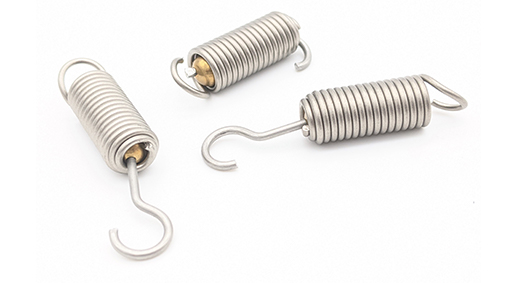Get unique, complex parts easily. No matter your requirements, Chaoyi Spring creates hard-to-produce coil springs and wire forms.
Let us help you create the custom wire form you need, from S-hooks and J-hooks to utility hooks and more.
We work closely with customers across a wide range of industries, helping them design and manufacture made-to-order parts.
Why choose Chaoyi Spring? We prioritize customer-focused collaboration, modern equipment and the latest technology to make your parts per print.
Find the information and guidance you need, from measuring a spring to learning about materials, placing an order and much more.
Have you ever wondered how a bouncy ball bounces, or how a spring-loaded door closer works? The answer lies in the principle of spring compression. This seemingly simple phenomenon, the


Have you ever wondered how a bouncy ball bounces, or how a spring-loaded door closer works? The answer lies in the principle of spring compression. This seemingly simple phenomenon, the act of squeezing or shortening a spring, plays a crucial role in various aspects of our lives, from the playful bounce of a trampoline to the precise movements of a car suspension. In this article, we'll delve into the fascinating world of spring compression, exploring its underlying physics, applications, and the factors that influence its behavior.

At its core, spring compression is a manifestation of Hooke's Law, a fundamental principle in physics that describes the elastic behavior of materials. This law states that the force required to compress or stretch a spring is directly proportional to the displacement of the spring from its equilibrium position. In simpler terms, the more you compress a spring, the stronger the force it exerts back. This force is known as the spring force.
Imagine a spring in its relaxed state, neither compressed nor stretched. When you apply a force to compress it, you're essentially storing potential energy within the spring. This stored energy is proportional to the amount of compression. As you release the spring, this stored energy is converted into kinetic energy, causing the spring to expand and exert a force back against the object that compressed it.
Several factors can influence the behavior of a spring during compression. Let's take a look at some key ones:
Spring compression finds its way into a wide range of applications, both in everyday life and in sophisticated engineering systems. Here are a few examples:
While we've focused on compression, it's important to remember that springs can also be stretched, exhibiting similar elastic behavior. This elasticity is the fundamental characteristic that makes springs so versatile. The ability to store and release energy, along with the predictable force-displacement relationship, makes springs indispensable in a wide variety of applications.
In conclusion, spring compression is a captivating and practical phenomenon that governs the behavior of many systems around us. By understanding the underlying physics and the factors that influence spring compression, we gain valuable insights into how these seemingly simple components play a crucial role in our world, from the playful bounce of a ball to the precision of complex machines. Spring compression, in its simplicity, truly encapsulates the power of physics in shaping our daily lives.
As we've explored, spring compression is much more than just a simple act of squeezing. It's a fundamental principle with far-reaching implications, affecting various aspects of our daily lives. From the bounce of a ball to the intricate mechanisms of advanced machinery, spring compression serves as a testament to the elegance and practicality of physics. By understanding this phenomenon, we gain a deeper appreciation for the forces that shape our world, revealing the hidden beauty within the seemingly simple act of compressing a spring.
Browse some of the custom wire forms and springs that we manufacture. Don’t see what you need? We specialize in made-to-order products that meet your application requirements.
Visit Our GalleryNeed a custom wire form or coil spring? We make it work. Fill out the contact form and a representative will respond within 1 business day. If you have a PDF or CAD file, you can submit to request a quote.